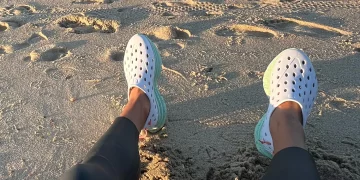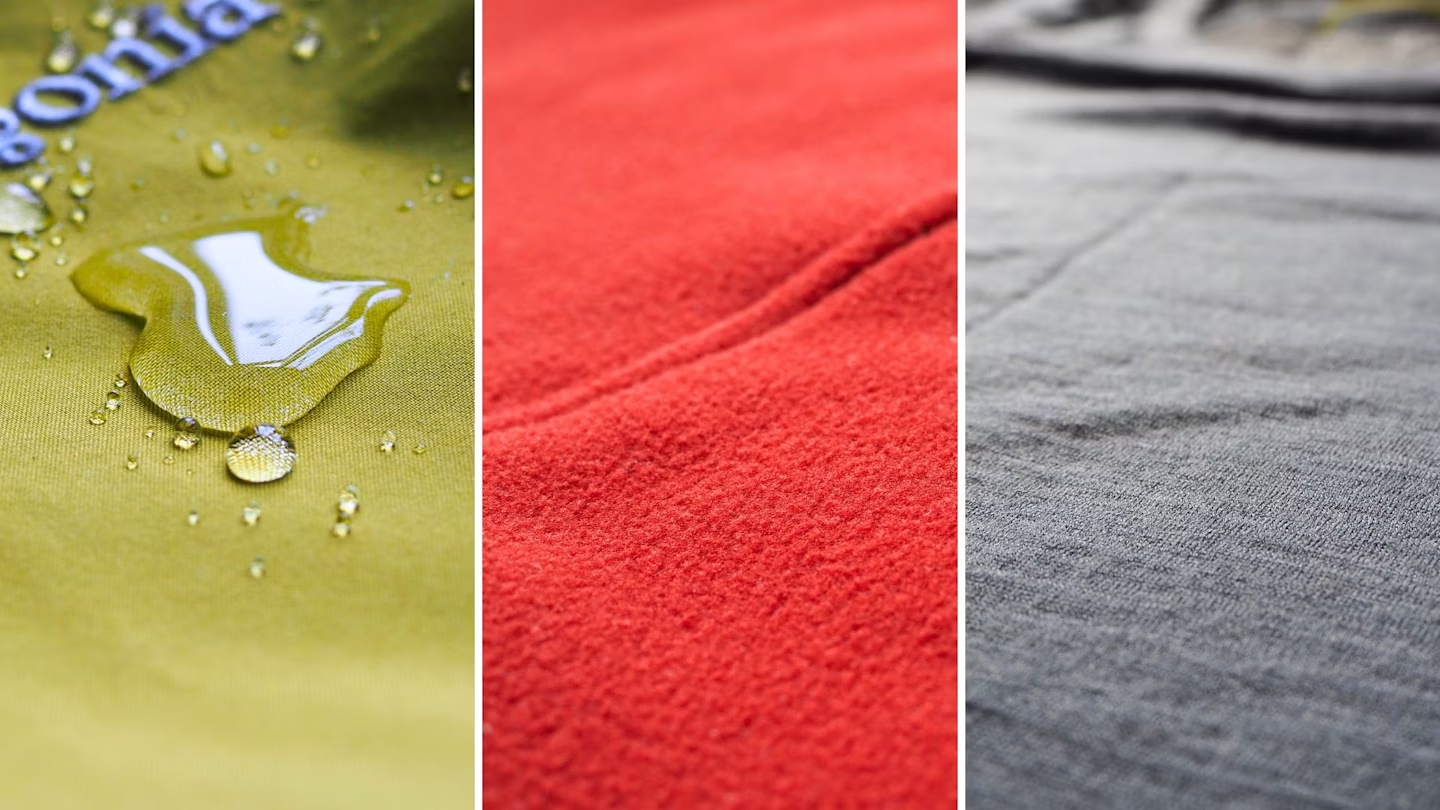When it comes to water-based adventures, from kayaking to hiking across rocky riverbeds, one of the most critical pieces of gear is often overlooked—footwear. Whether you’re wading through streams, hopping between boulders, or venturing on a whitewater rafting trip, your feet will be in constant contact with the elements. Finding the right footwear can not only make or break your comfort but also protect you from potential injuries. In this article, we’ll take you through the best footwear options for various water-based activities, covering everything from design features to material technology. By the end, you’ll know exactly which shoes can keep your feet happy and healthy while you explore the watery world around you.
1. Water Shoes: The Classic Go-To
Water shoes are perhaps the most universally recognized footwear for any water-based activity. These shoes are designed specifically for wet environments and can handle everything from lakes to rivers to the ocean. Their design is simple but highly functional, usually featuring a mesh upper, rubber sole, and a snug fit to prevent slipping.
Features:
- Quick Drying: The mesh material allows water to drain quickly, preventing the shoe from holding excess moisture that could lead to chafing or discomfort.
- Breathability: The open structure and breathable fabrics help your feet stay cool, even when you’re fully submerged.
- Grippy Soles: Many water shoes feature specially designed rubber soles that provide traction on slippery rocks and uneven surfaces, which is essential for both safety and comfort.
Best For:
- Kayaking
- Paddleboarding
- River trekking
- Beach walking
2. Water Sandals: Ventilation with Protection
Water sandals combine the best features of traditional sandals and water shoes. They offer the breathability and freedom of a sandal while providing more protection and stability than the average flip-flop. The soles of water sandals are typically equipped with a durable, slip-resistant tread, ensuring that you don’t lose your footing on wet or rocky surfaces.

Features:
- Adjustable Straps: Most water sandals come with adjustable straps, allowing a custom fit that secures your foot without cutting off circulation.
- Open-toe Design: While this allows for ultimate freedom and ventilation, some designs come with a protective toe cap for added safety.
- Durable Materials: Water sandals often incorporate synthetic or rubber materials that can withstand saltwater and other harsh elements without deteriorating.
Best For:
- Walking around the beach or in shallow water
- Casual water hikes
- Travel and sightseeing in water-based areas
3. Waterproof Hiking Boots: For the Serious Adventurer
For those who enjoy more intense water-based adventures like river crossings or hiking in wet, rugged environments, a good pair of waterproof hiking boots is indispensable. These boots offer higher ankle support than traditional water shoes or sandals, making them ideal for traversing slippery, uneven terrains.
Features:
- Waterproof Membranes: Boots equipped with GORE-TEX® or similar waterproof technology ensure your feet stay dry in wet conditions without sacrificing breathability.
- Stability and Support: High-cut designs and durable soles with excellent grip provide ankle stability on rocky or uneven surfaces.
- Insulation (optional): Some waterproof hiking boots come with added insulation, which is ideal for cold, wet environments where hypothermia can be a risk.
Best For:
- River crossings
- Hiking in wet, muddy areas
- Multi-day treks where wet conditions are expected
4. Barefoot Water Shoes: For the Minimalist Adventurer
For those who prefer a more natural approach to their outdoor experiences, barefoot water shoes might be the ideal choice. These shoes mimic the feel of walking barefoot while still providing some level of protection and grip. The minimalist design typically features a thin sole and very little padding, allowing for maximum flexibility and ground contact.
Features:
- Minimalist Design: Barefoot water shoes have a simple, flexible design that lets your feet move naturally.
- Water Drainage: Like traditional water shoes, they allow water to drain easily, preventing discomfort from pooling inside the shoe.
- Foot Protection: The thin soles are made from materials that protect the feet from sharp rocks and rough terrain while still allowing for a close-to-the-ground feel.
Best For:
- Those who want to feel connected to the terrain
- Beach or lake activities where minimal shoe interference is preferred
- Activities like barefoot running or walking in shallow water
5. Aqua Socks: Light, Flexible, and Compact
Aqua socks are lightweight, slip-on shoes that are designed for quick and easy use in the water. Made from stretchy, flexible materials, they’re ideal for casual water activities like beachcombing, wading, or light water aerobics. Their compact design makes them perfect for packing into a bag or suitcase when traveling.
Features:
- Compact Design: Aqua socks are thin, lightweight, and easy to pack, making them an excellent choice for travelers.
- Comfortable Fit: They’re made from stretchy materials like neoprene or Lycra, which conform to the shape of your foot for a snug, sock-like fit.
- Protection from Abrasions: The thin soles and materials provide just enough protection against sand, rocks, or other abrasions while still being extremely flexible.
Best For:
- Swimming or light water-based activities
- Beachcombing or walking along shorelines
- Poolside or spa visits

6. Wading Boots: Specialized Footwear for Water Sports
Wading boots are an essential piece of gear for anglers and anyone participating in activities that require standing or walking in rivers or lakes. These boots offer extra protection for your feet and legs against underwater obstacles, such as rocks, branches, and sharp objects.
Features:
- Rubber Soles: The soles are designed to provide maximum traction, making it easier to stay upright on slippery rocks.
- Supportive Fit: These boots often come with a higher cuff to protect the ankle and lower leg from injury.
- Waterproof or Water-Resistant: Many wading boots are waterproof to keep your feet dry even when you’re submerged.
Best For:
- Fly fishing
- Wading in rivers and streams
- Water-based hunting activities
7. Waterproof Flip-Flops: For Easy Going
While flip-flops are typically not the most protective option for water activities, waterproof versions can still serve as a decent footwear choice for low-intensity beach activities or as a quick option after swimming. They’re lightweight, easy to slip on and off, and allow your feet to breathe. However, be aware that their lack of a secure fit can sometimes lead to slips on slippery surfaces.
Features:
- Lightweight and Compact: Easy to carry and ideal for minimalist travelers.
- Quick Drying: Made from quick-dry materials like rubber or EVA foam, they won’t hold onto moisture for long.
- Comfortable and Casual: Great for short walks on the beach or poolside lounging.
Best For:
- Casual beach walking
- Post-swim footwear
- Short, non-strenuous trips around the water
How to Choose the Right Water Footwear for Your Activity
Selecting the right footwear for water activities depends on the specific nature of your adventure. Here are some quick tips for choosing:
- Consider the Terrain: If you’re walking on rocky riverbeds, look for shoes with a more robust sole and ankle support. For smooth beach walks or poolside lounging, lightweight sandals or flip-flops might suffice.
- Water Exposure: For prolonged water exposure (like kayaking or fly fishing), waterproof materials and breathable designs are crucial to keep your feet dry and comfortable.
- Activity Intensity: High-intensity activities like hiking, trekking, or rafting require more support, stability, and protection. For more relaxed activities like swimming, something minimal like aqua socks may be ideal.
Conclusion
Footwear may seem like a secondary concern when planning a water adventure, but the right pair can make all the difference in your comfort, safety, and enjoyment. Whether you’re kayaking down a river, hiking through muddy terrain, or just lounging on the beach, your feet deserve the best. Remember to choose based on the environment, your activity, and personal preference to ensure you’re always one step ahead in your water-based adventures.























